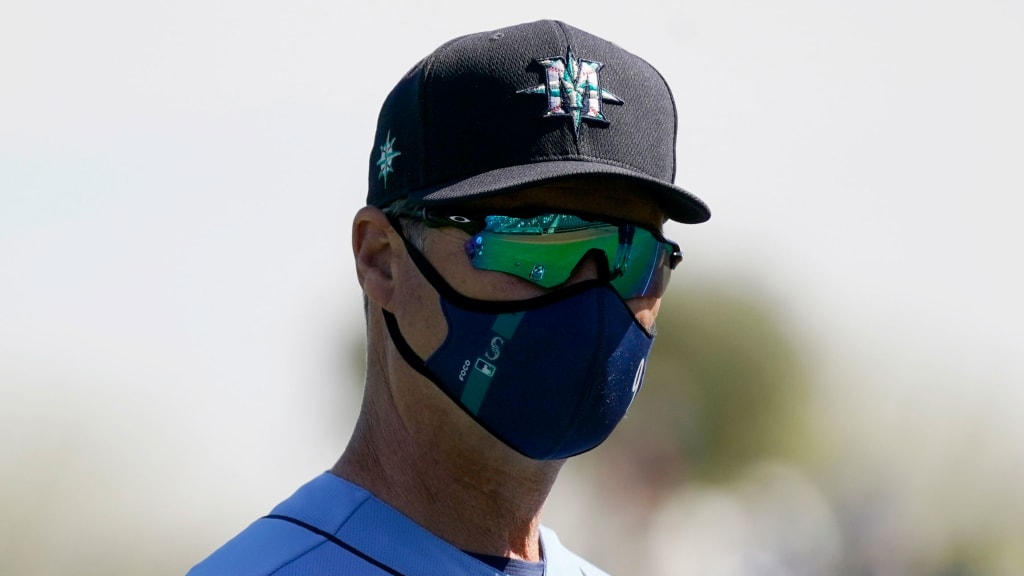
PEORIA, Ariz. -- Mariners manager Scott Servais understands that “change is uncomfortable,” but he’s mostly on board with all of the proposed rules alterations that are coming to the Minor Leagues in 2021.
Major League Baseball, which took over jurisdiction of the 120 Minor League clubs this year, announced Thursday that new rules will be installed at different classifications this season. While none of these adjustments are guaranteed to reach the Majors, changes at the Minors level have been precursors in the past.
Limits on defensive shifts and pickoff attempts, bigger bases and “robot umps” are among the most prominent changes that are coming in 2021 across the Minors.
“Almost all of the changes they've talked about, I'm in favor of,” said Servais, who was recently on a call with a small group of MLB managers whose input was sought. “I think we need to adjust our game. We need to make changes to our game. We are entertainment, and we have to be open to change.”
Servais pointed to changes over the years in the NFL (pass interference calls) and NBA (shot clock and three-point line), as well as the apprehensions that those leagues faced to change and the successes that they saw.
“You’re just trying to create more excitement and more action in the game,” Servais said. “And where does baseball go? I think the fact that they're trying to do some of these things at the Minor League level is a good thing. It's a test run, a test trial.”
On pitch clocks
“They collect all the data on it. They really see: Does the pitch clock really speed up the game or not? I do think the pitch clock is a good thing. I've seen it in the Minor Leagues a little bit, and it works and it's not that big a deal. The players do adjust. They will get used to it. They may fight it at first, but they understand, hopefully, that's the way it's going to be and they will make an adjustment.”
On robotic umps
“My personal opinion, I was not a big fan of it. But I understand why it could get there. Certainly, the technology has to be really tight because it will change the game dramatically and certainly change how they evaluate and look at the catching position over time."
Servais was an 11-year big league catcher, who appreciates the value of framing more than most.
“My original take was that I was not a fan of the automated strike zone. But I do understand why it is getting looked at and why it could be put into play. Again, it really comes down to the technology, getting it dialed in. It can't just be one uniform strike zone. There’s a different strike zone between Jose Altuve and Giancarlo Stanton. It can't have the same strike zone; it can't be the same box. So I'm sure they're going to get the technology right for that.”
The changes to the Minors rules -- and the leagues in which they will apply -- are as follows:
• Slightly larger bases with a less-slippery surface (all Triple-A leagues)
• A requirement that all four infielders have their cleats within the outer boundary of the infield dirt when the pitch is delivered (all Double-A)
• A requirement that pitchers must step off the rubber to attempt a pickoff (all High-A)
• A limit of two pickoff attempts per plate appearance (all Low-A)
• A 15-second pitch clock (Low-A West only)
• An automatic ball-strike system (Low-A Southeast only)
Unrelated to the Minors rule changes, Servais discussed the slight alterations to the baseball that MLB implemented for 2021. Specifically, the biggest changes are to the ball’s seam height, and the results of balls tested prior to Spring Training revealed shorter distances of balls hit more than 375 feet.
“I really haven't seen much change [with] the ball,” Servais said. “I know they talked about doing a little something to it this year. I haven't seen much. If you've been to the games in Arizona, it's been very windy, very dry, and the ball is flying. So I haven't seen much change there.”
